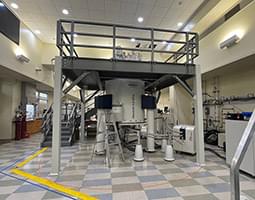Jan 24, 2024
To make science more approachable, ‘Curiosity’ series takes viewers behind the scenes of scientists’ lives
Posted by Dan Breeden in categories: biotech/medical, science
Stepping inside Erin Adams’ lab at the University of Chicago is a bit overstimulating.
Adams’ work centers on molecular immunology. As the Joseph Regenstein Professor of Biochemistry and Molecular Biology and vice provost for research, she researches the molecular signals that the immune system uses to distinguish between healthy and unhealthy tissue.
And her lab is expansive. It includes a tissue culture lab space—where she and her team of postdoctoral fellows work with cells to try to recapitulate things. Then there’s the crystal room where one can find hundreds of labeled wells filled with proteins that are being watched to see if three-dimensional crystals materialize.

















